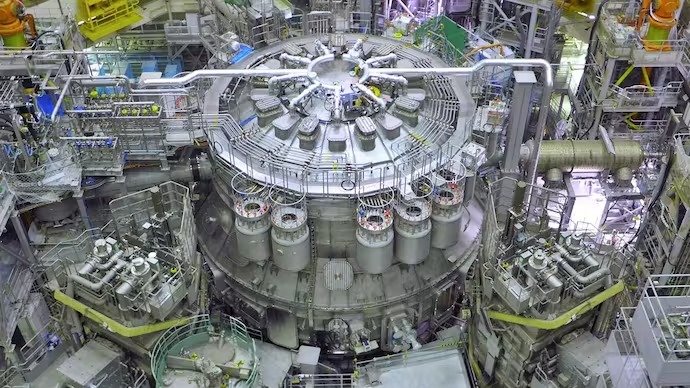China’s Global Times reported that Jiangnan Shipyard, owned by China State Shipbuilding Corporation Limited, unveiled the design for a 24000 TEU-class nuclear-powered container ship. Notably, it employs Molten Salt Reactors for safety, reducing the risk of nuclear meltdowns. The reactor can be swiftly stopped in case of a breach, underscoring a commitment to safety standards. This marks a revolutionary step in developing ultra-large nuclear-powered container ships with nearly zero emissions.
Jiangnan Shipyard is actively researching container ship designs and propulsion systems to address energy conservation and emission reduction amid climate change. The reactor’s design emphasizes top-notch safety, operating at high temperatures and low pressures to prevent nuclear meltdowns. Notably, it can be swiftly halted in emergencies, showcasing a commitment to preventing further damage.
The newly unveiled container ship could offer a genuine “zero-emissions” solution, potentially ranking among the world’s largest with a 24,000-container capacity. It features the first molten salt-driven nuclear reactor, likely powered by thorium, known for its cost-effectiveness and widespread availability in China. This innovative reactor, distinct from uranium-powered ones, enhances efficiency and safety by requiring minimal water for cooling. China’s recent authorization for the first thorium reactor marks a significant advancement in the country’s pursuit of cutting-edge nuclear technologies, led by the Shanghai Institute of Applied Physics.
The design holds international certification from the DNV Classification Society, a top player in the global maritime sector, offering assurance to potential buyers worldwide. Jiangnan Shipbuilding’s initiative, endorsed by Maritime China, responds to climate change and energy conservation needs. The design incorporates nuclear energy through an advanced fourth-generation molten salt reactor, earning it recognition for achieving “zero emissions” during operation.
The concept isn’t exclusive to China; shipbuilders in Europe, South Korea, Japan, and the US have explored similar designs, yet none has seen significant breakthroughs. China’s rapidly growing shipbuilding sector, responsible for over 60% of global new ship orders this year, has contributed to the nation’s substantial naval expansion. This growth in the civil shipbuilding sector has led to the production of cutting-edge ships equipped with technologies like electromagnetic launch systems and ultra-long-range radar.

